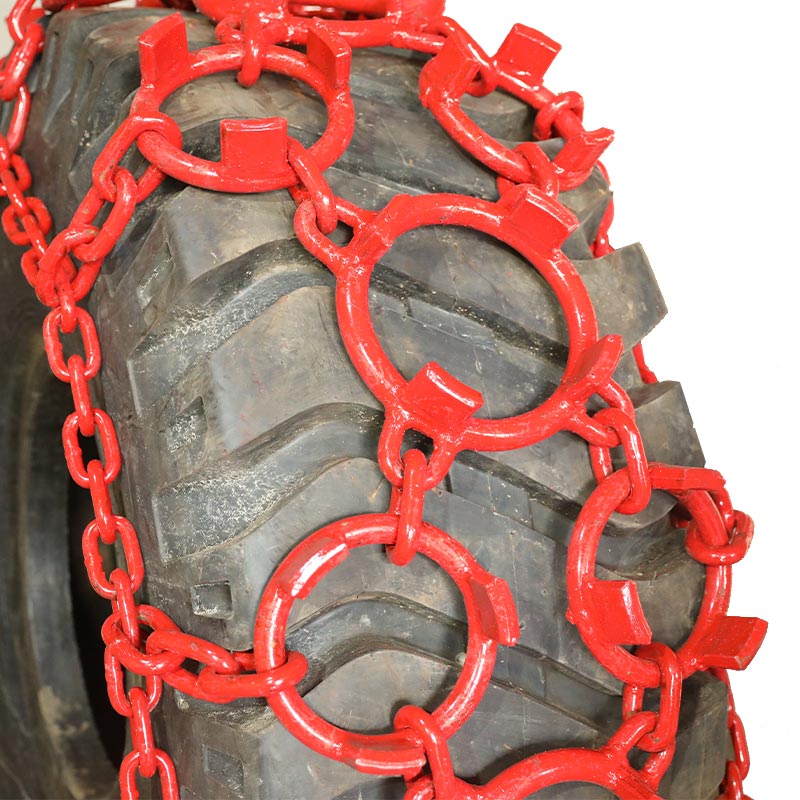Home / News / Industry News / How do Forestry Skidder Chains Enhance Traction in Challenging Logging Environments?
How do Forestry Skidder Chains Enhance Traction in Challenging Logging Environments?
Jan 25,2024
Forestry skidder chains play a pivotal role within the logging enterprise through appreciably enhancing traction within the hard and sundry terrains wherein forestry operations take vicinity. Traction is a crucial component for the efficient and secure movement of heavy forestry skidders, especially in environments characterised by using mud, snow, choppy surfaces, and boundaries like rocks and tree roots. Let's delve into the traits that make contributions to the effective traction enhancement provided by means of forestry skidder chains.
1. Aggressive Tread Patterns:
Forestry skidder chains characteristic aggressive tread patterns designed to bite into the ground. These patterns vary in layout, with a few chains incorporating spikes or cleats that firmly grip the terrain. The aggressive tread serves to boom the coefficient of friction between the skidder's tires and the ground, stopping slippage and enabling higher forward or backward motion.
2. Improved Grip on Slippery Surfaces:
In logging environments, skidders frequently stumble upon slippery surfaces due to dust, snow, or moist conditions. Forestry skidder chains are engineered to provide stepped forward grip on such surfaces, lowering the hazard of skidding or getting caught. This is especially critical for maintaining operational performance and preventing downtime in logging activities.
3. Enhanced Stability on Uneven Terrain:
Forestry operations regularly involve navigating thru difficult and choppy terrains. Skidder chains contribute to greater stability by means of offering additional traction factors across the tire floor. This delivered balance minimizes the danger of tipping or dropping manage, ensuring that the skidder can successfully negotiate barriers which includes rocks and tree roots without compromising protection.
4. Load Distribution and Reinforced Cross Chains:
The design of forestry skidder chains includes bolstered go chains that distribute the weight lightly throughout the chain. This is important for preventing character links from breaking under the immense hundreds encountered in forestry packages. The strengthened cross chain layout additionally contributes to preserving steady traction and balance, even if dragging heavy hundreds of felled trees.
5. Bite and Grip in Uphill and Downhill Situations:
Logging web sites often feature slopes and inclines, posing demanding situations for equipment maneuverability. Forestry skidder chains are engineered to provide effective traction both uphill and downhill. The chains' capability to chew into the terrain and withstand slipping ensures that skidders can navigate slopes with more manage, decreasing the threat of injuries and enhancing ordinary operational safety.
6. Easy Adaptability to Changing Conditions:
Forestry operations can enjoy unexpectedly changing climate and floor situations. Skidder chains are designed for clean installation and elimination, allowing operators to adapt speedy to exclusive terrains. This adaptability ensures that skidders can preserve top of the line traction in diverse scenarios, enhancing operational flexibility and performance.
In conclusion, the traction enhancement characteristics of forestry skidder chains are important for the safe and efficient operation of logging equipment in difficult environments. These chains no longer only improve grip on slippery surfaces however additionally make contributions to stability, load distribution, and adaptability to diverse terrains, in the end making sure that forestry skidders can navigate via stressful situations with elevated performance and protection.

Ring Skidder Chain Multiring Chain

Ring Skidder Chain Multiring Chain


 English
English Español
Español









-1.jpg?imageView2/2/w/426/h/347/format/webp/q/75)

 Hangzhou Lijia Chain Co., Ltd.
Hangzhou Lijia Chain Co., Ltd. Tel: +86-0571-82711102
Tel: +86-0571-82711102 Fax: +86-0571-82326368
Fax: +86-0571-82326368 Mail: info@ljchain.com
Mail: info@ljchain.com Add: Lianfa village, Heshang town Xiaoshan District, Hangzhou City, Zhejiang Province, China
Add: Lianfa village, Heshang town Xiaoshan District, Hangzhou City, Zhejiang Province, China